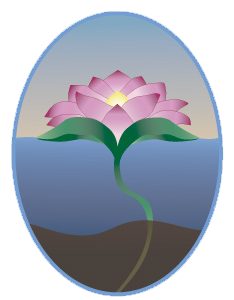Ayurveda, the ancient sister-science of yoga, is the wisdom of life and vitality. It follows the rhythms and tendencies exemplified by Mother Nature in her simplicity. Would a seedling sprout away from the sun? Would birds fly north instead of south for their winter migration? Would animals of the forest and field not eat the food that nature provides each season? All plants and animals have the innate knowledge of how to maintain balance by following these cycles. If we desire balance in our lives, then we, too, must consider our natural tendencies and rhythms in body, mind, and emotions in order to harmonize them with the external cycles. We can swim upstream against the current of life or we can choose to turn around and go with the flow.
The Three Forces of Ayurveda
Through the lens of Ayurveda, we can see that all things in the universe are governed by three forces—wind, fire, and water. Vata, the elemental principle of wind, is cold and dry like the winter season, and it governs all movement and transition like sunrise and sunset, the transition between dark and light. Movement in the body is carried out through the nervous system, so vata is intimately related to the brain and central nervous system. Pitta, the elemental principle of fire, is hot and moist like the summer season, bright and intense like the peak of the sun at noon. Pitta governs transformation in all things. Just as a fire can transform wood into ashes, the fire of digestion can transform food into energy for our body. The elemental water principle kapha is cool and wet like spring or a misty morning. Kapha combines the lubrication of the water element with the stability of the earth element to create all the solid structures of the body—the bones, joints, and muscles.
These three forces are present in all things from a single cell to the cycle of the day or season, and they keep each other in perfect balance. Winter’s dryness (vata) is balanced by the moisture of spring (kapha), and the cold accumulated in these times is melted away by the heat of summer (pitta). Then the cycle completes itself when the excess heat from summer is soothed away by the cooling of the coming fall and winter. Opposite qualities bring balance. This is the basis of all Ayurvedic treatment.
Microcosm of the Macrocosm
In the human body the same is true, because we are a microcosm of the macrocosm. The qualities that are present in the season and the time of the day permeate us. Do you ever wonder why we eat lunch at mid-day? The peak of the sun is the greatest time of fire in the day, and our digestive fire is also the strongest then. Have you ever struggled to pull yourself out of bed on a rainy day? The heavy dampness of the rain has made your body heavy and lethargic.
Ayurveda is the knowledge that we all possess and experience every day. If we take time to listen, our body’s wisdom will tell us what we need in each and every moment. If you are feeling chilled, you need the warmth of a fire or a hot drink. When you are hot from working in the sun, you seek shade or a cool drink. Opposite qualities bring balance. This is the knowledge can create true health and vitality.
This is Ayurveda.




